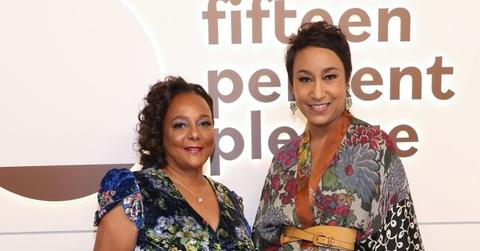
30 Years of Black Opal: A Pillar in the Black Beauty Industry
By Alan BlakeDec. 18 2023, Published 7:50 p.m. ET
Historically, mainstream beauty brands catered majorly to white women. Niko Mouyiaris, whose wife was African American, identified a market gap and launched the inclusive beauty company, Black Opal.
Black Opal’s launch and success would soon pave the way for other companies, such as Fenty, Pat McGrath Labs, and Hyper Skin, to make quality beauty and skincare products for Black women. Despite being a market leader for over 25 years, Black Opal, now BLK/OPL, hasn’t slowed down.
Let’s take a look at Black Opal’s brilliance in standing against competition in the beauty industry and the company’s role in representing Black beauty.
The Void That Black Opal Identified In The Market
Unfortunately, white skin color has been the beauty standard for the longest time. Therefore, many beauty companies failed to formulate products that suit women of color because they put little effort into understanding Black skin. Many brands released poorly formulated products with a one-shade-for-all solution that did not work for people of color.
Black Opal was a company on a mission. In 1994, the founder, Niko Mouyiaris, hired chemists and dermatologists to research Black skin, and then carefully curated high-end products that would flatter people of color, something no one had done before.
After the death of its founder in 2019, Black Opal was acquired by Desiree Rogers and Cheryl Mayberry McKissack, officially making it a black-owned beauty brand. Although the new team rebranded to BLK/OPL, they promised to stick to the company’s primary mission: providing people of color with superior products.
How Black Opal Conquered The Black Beauty Market
Like most successful businesses, Black Opal was destined to understand its target market. The company had already defined and carved out its target market: people of color. They sought to understand the struggle of Black women looking for the perfect shade of lipstick or foundation.
After months of careful formulation, Black Opal released deep-pigmented lipsticks, eye shadows, and foundations to suit a Black person’s skin tone. Their target audience had the money to spend on quality products if the quality was met. This strategic business move would usher Black Opal into over two decades of sheer dominance in the beauty industry.
Why Black Opal Stood Out
While setting a reasonable price point for high-quality products certainly made Black Opal an attractive seller, other aspects made them competitive. Firstly, the company produced products in numerous shades to serve different skin colors and concerns.
Secondly, Black Opal diversified its products thanks to adequate research and development. The company added sunscreen to its line of products, which was quite unusual at the time as many believed that dark skin didn’t need protection from the sun. Black Opal was dedicated to demystifying myths revolving around black skin.
Other new and exciting products like Vitamin C and E serums promise to improve skin texture and color. True to their word, the team at Black Opal dedicated resources to creating quality products that would compete with other superior brands in the market.
The company makes about $15 million in sales annually and is estimated to grow in the coming years.
Black Opal’s Legacy Will Live On
Now, under new ownership, the sky is the limit for BLK/OPL, and they are determined to keep revolutionizing the beauty industry for women of color.
“When we acquired Black Opal our goal was to stay true to the founders’ passion,” President, Cheryl Mayberry McKissack told Essence. “As we continue to grow the company and bring high-quality products to the market, we also plan to focus on creating a positive impact in our communities.”
She continued, “Together Cheryl and I are looking forward to creating even more innovative products and continuing to grow the brand globally.”

